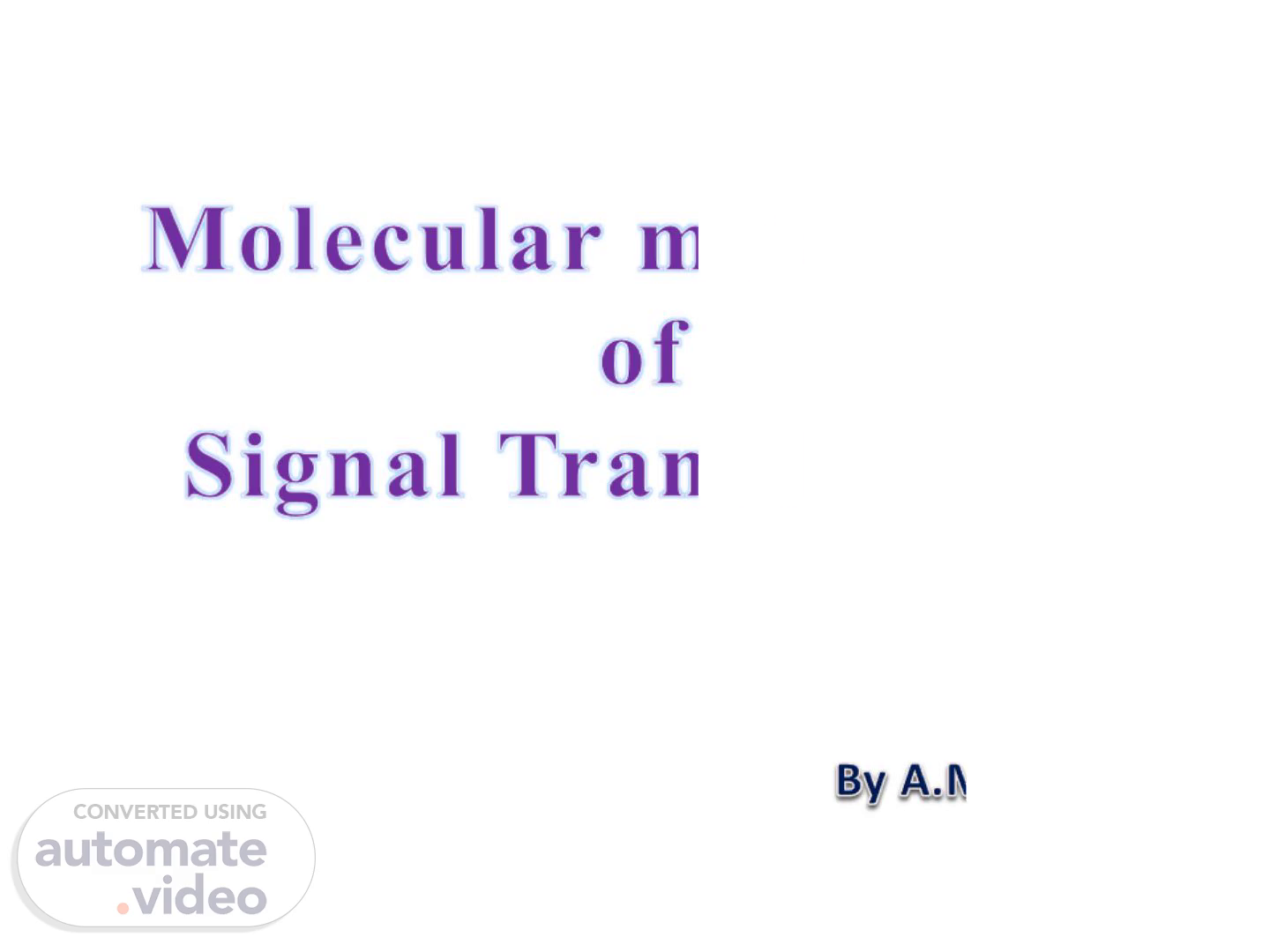Scene 1 (0s)
Molecular mechanism of Signal Transduction. By A.M.
Scene 2 (7s)
Outlines. Introduction to cell signaling Key elements in signal transduction Type of signaling based on distance Steps of signal transduction Signaling molecules Signal transduction through various receptors Promising drug targets.
Scene 3 (19s)
Introduction to cell signaling. Cells regulate its intracellular and extracellular environment, processes the information it gathers, and responds accordingly. Cell signaling is the ability of a cell to receive, process, and transmit signals with its environment and with itself. It is a fundamental property of all cells in every living organism Cell signaling is a controlled dynamic process Have mechanisms for responding to physical and chemical changes in their environment. This mechanism helps cells to have a communication with other cells.
Scene 4 (41s)
Cont…. Reception of the signals depends on protein at the cell surface Most are receptors The binding activates the receptor, which in turn activates one or more intracellular signaling pathways or systems Then distribute it to the appropriate intracellular targets.
Scene 5 (56s)
Key players in signal transduction. Signaling molecules/ligands Receptors Signal transduction proteins Second messengers Effector proteins.
Scene 6 (1m 5s)
6. Intracellular signaling proteins. Extracellular.
Scene 7 (1m 23s)
Type of signals based on distance. Cells communicate with the help of messenger molecules Autocrine signals – its own cell receptors Paracrine signals – targets near by cells Endocrine signals – targets far away cells.
Scene 8 (1m 35s)
8. Receptor. 1. Autocrine signaling. 2. Paracrine signaling.
Scene 9 (1m 46s)
Steps of cell signaling. The coming signal recognized by cell surface components call receptors The extracellular signal converted to an intracellular signal Response is delivered.
Scene 10 (2m 4s)
Ligands/signaling molecules. Hydrophilic Interact through extracellular receptors Hydrophobic Interact through intracellular receptors.
Scene 11 (2m 20s)
Receptors. Binding sites of a signaling molecule Extracellular receptors Integral transmembrane proteins (most) Ligands interact with extracellular domain and other molecules may with cytosolic domains May open and closed to transport ions Intracellular receptors class of nuclear receptors Located inside the cell rather than cell membrane Classical examples: Hormone receptors IP3 receptors on Sarcoplasmic R.
Scene 12 (2m 37s)
Receptor. Ligand binding causes a conformational change in the receptor Leads to the transmission of an intracellular signal Receptor-ligand extent of molecular complement determined by specificity and affinity A given receptor may exhibit specificity for a certain ligand or closely related ligands exhibit effector specificity E.g. Adrenalin and NA in alpha and Beta receptors.
Scene 13 (2m 54s)
Types of signaling receptors. 13. Signaling Receptors.
